#dravidian
Text
candy
late 13c., "crystallized sugar," from Old French çucre candi "sugar candy," ultimately from Arabic qandi, from Persian qand "cane sugar," probably from Sanskrit khanda "piece (of sugar)," perhaps from Dravidian (compare Tamil kantu "candy," kattu "to harden, condense").
25 notes
·
View notes
Text
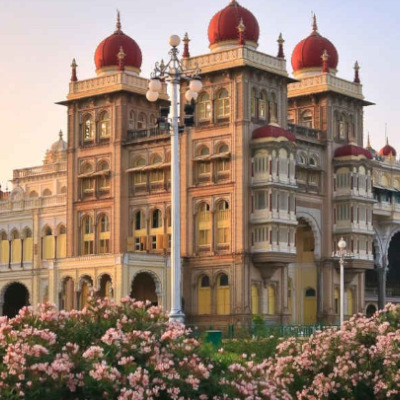



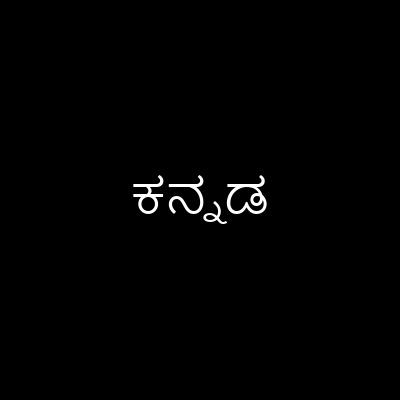
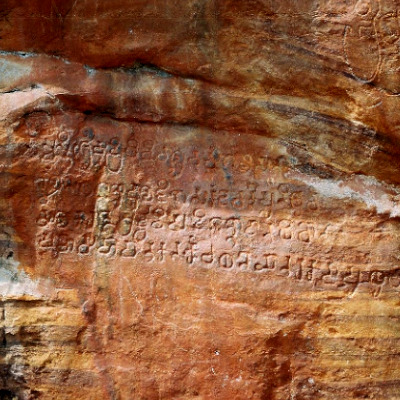


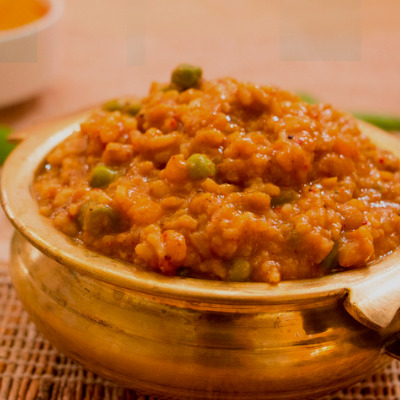
Aesthetic of the languages on earth : Kannada
Kannada is a Dravidian language spoken by 43.7 million people over the Karnataka region of India. It is an official language of Karnataka.
39 notes
·
View notes
Text
Brahmin supremacy
Social hierarchy: The Brahmins established a social hierarchy in which they occupied the topmost position, giving them immense power and control over other communities and perpetuating systems of oppression.
Caste system: Brahmins created and maintained the caste system, which divided society into rigid hierarchies based on birth. This system reinforced Brahmin dominance and enabled them to control the resources and opportunities available to different groups.
Caste-based violence: The Brahmins perpetuated violence against lower caste communities, particularly Dalits, through the caste system, which allowed for institutionalized discrimination and violence.
Marriage practices: The Brahmins established strict rules around marriage and family structures, which helped to perpetuate their social and economic power.
Religious monopoly: Brahmins claimed a monopoly over religious knowledge and practice, which allowed them to control and manipulate the spiritual lives of others. This further reinforced their social and political power.
Religious hegemony: The Brahmins established themselves as the custodians of religious knowledge and texts, giving them significant influence over religious practices and beliefs across South Asia.
Cultural appropriation: The Brahmins appropriated and assimilated elements of indigenous cultures and traditions, erasing the contributions of other communities and further consolidating their power.
Intellectual property: The Brahmins often appropriated the knowledge and intellectual property of other communities, erasing their contributions and further consolidating their own power and influence.
Education: The Brahmins monopolized education, particularly in the pre-colonial period, creating a system that privileged their knowledge and excluded other communities from accessing educational opportunities.
Education: Brahmins controlled access to education and knowledge, which further reinforced their social and economic dominance. They monopolized education and ensured that only members of their own caste could become scholars, priests, and teachers.
Land ownership: Brahmins acquired vast amounts of land through various means, such as gifts from kings or temples, and used their wealth and power to further consolidate their control over society.
Land ownership: The Brahmins, particularly in colonial times, acquired large tracts of land, often through exploitative means, consolidating their economic and political power.
Language and literature: The Brahmins established Sanskrit as the language of knowledge and literature, excluding other languages and literary traditions from the mainstream.
Language dominance: Brahmins promoted the use of Sanskrit, which was the language of the elite and the language of many Hindu religious texts. This gave them further linguistic dominance and helped to consolidate their cultural and political power.
Political influence: The Brahmins have played a significant role in shaping political structures and institutions across South Asia, often to their own advantage.
Systematic exclusion of lower castes from religious and social institutions
Appropriation of land and resources from indigenous communities
Imposition of Sanskrit as the language of power and knowledge, leading to the neglect and suppression of other regional languages and cultures
Establishment of a rigid caste system, with Brahmins at the top and other castes relegated to lower social status and economic opportunities
Monopolization of education and intellectual discourse, leading to the suppression of dissenting voices and alternative knowledge systems
Co-optation of indigenous spiritual practices and beliefs, leading to the marginalization and erasure of non-Brahmin religious traditions
Control over political power and governance through the Brahminization of the state
Promulgation of patriarchal norms and practices, leading to the subjugation and exploitation of women and other gender minorities
Promotion of vegetarianism as a moral and ethical ideal, leading to the marginalization and stigmatization of non-vegetarian communities
Use of violence and coercion to maintain Brahmin hegemony and suppress dissenting voices and movements
Creation of a cultural hegemony that has influenced and shaped the social, political, and economic structures of South Asia for centuries
Control over the production and dissemination of knowledge, leading to the suppression of alternative epistemologies and worldviews
Consolidation of economic power through the control of trade networks and commercial enterprises
Implementation of discriminatory and oppressive laws and practices against lower castes and non-Brahmin communities
Maintenance of a system of inherited privilege and power that has perpetuated Brahmin domination across generations
Control over religious and cultural practices, leading to the erasure and marginalization of non-Brahmin traditions and beliefs
Construction of a narrative of Brahmin superiority and moral authority, leading to the internalization of caste-based discrimination and oppression by non-Brahmin communities
Establishment of a culture of fear and intimidation, leading to the suppression of dissenting voices and the perpetuation of Brahmin hegemony
Appropriation and commercialization of cultural artifacts and practices, leading to the exploitation and erasure of indigenous communities and traditions
Creation of a caste-based system of labor and economic exploitation, leading to the marginalization and impoverishment of lower castes and non-Brahmin communities.
#brahmin#hindu#hinduism#hindutva#india#jai hind#south asia#religion#brahmin supremacy#brahminization#meluhha#indus valley#dalit#bahujan#tamil#dravidian
24 notes
·
View notes
Text
Harappan Dancer
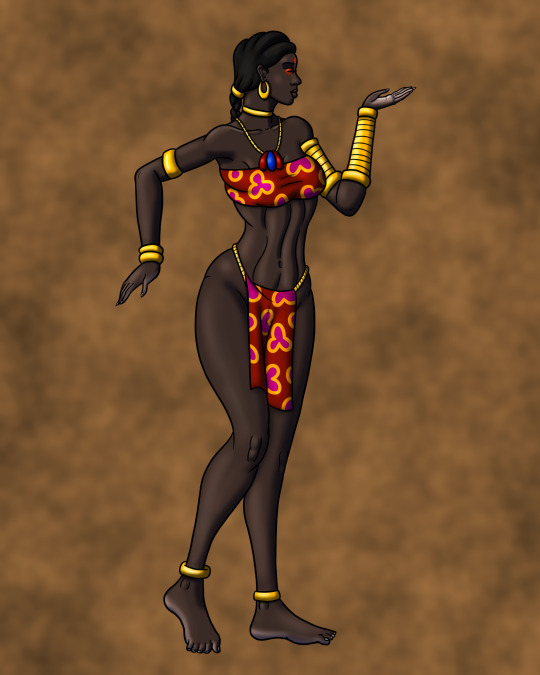
This is a female dancer from the Harappan civilization that spread over the Indus Valley in South Asia between 3300 and 1300 BC, being the first urban culture known to develop in the subcontinent. Her jewelry is referenced from a bronze statuette uncovered at the Harappan site of Mohenjo-daro in what is now northern Pakistan, but whereas the original sculpture showed a nude figure, I gave my version a top and loincloth to make it safer for work.
#Harappan#Indus Valley Civilization#indian#south asian#dravidian#dark skin#black woman#woman of color#digital art#art
3 notes
·
View notes
Text
Dreaming of Words [documentary]
This documentary is about Njattyela Sreedharan, a school dropout who compiled a dictionary connecting four major Dravidian languages. Travelling across four states and doing extensive research, he spent twenty five years making the multilingual dictionary. The dictionary offers a comparative study of Malayalam, Kannada, Tamil and Telugu. 'Dreaming of Words' traces Sreedharan's life, work, love for languages and the struggles to get the dictionary published. The film also explores the linguistic and cultural diversity in India.
youtube
trailer: Dreaming of Words (with English subtitles) | Official Trailer - YouTube
full movie: Dreaming of Words (with English subtitles) | Full Documentary - YouTube
13 notes
·
View notes
Text
5 notes
·
View notes
Text


I wanted to put this here on tumblr too. there were many famines during british rule since most of our land was being used to grow crops for the british raj. this meant most of the food and other resources kerala had were not being given to its people, and we suffered for it. it disturbs me to think that this history was so thoroughly wiped out that most people think kerala was one of the few places that was almost entirely unscathed during british rule.
also, I would not have looked into this history if someone had not pointed out a recent study claiming that the reason type-2 diabetes is so common in south and centra asia could be because of the famines during colonization. since my family has a history of type-2, it led to me finding out about this. I would never have known otherwise since most history sources don't mention kerala whenever they talk about famines in india.
3 notes
·
View notes
Quote
"In the year of the Rabbit, the second year of the reign of King Suryavarman, he sent an embassy to the king of the country of Chola, Rajendra Chola, requesting his help to put down a rebellion in the country. The king of Chola sent his son with an army to help the king of Cambodia, and the rebellion was put down."
Cambodian Chronicles
#Cambodian Chronicles#cambodian#cambodia#khmer#south east asia#south asia#tamil#india#indian#dravidian#chola#pandya#ps2#ponniyan selvan#history#ancient history#chola empire#khmer empire#year of the rabbit#Suryavarman#Rajaraja#Rajendra#Rajendra Chola#Rajaraja Chola#angkor wat#siem reap#maritime trade#buddhism#hinduism#hindu
10 notes
·
View notes
Text

we have found the evidence! This is a Dravidian language. Tamil, I’m pretty sure, though if someone can correct me (if wrong!) that would be highly appreciated.
We must note that this is a bilingual newspaper though- Hindi or Marathi or Nepali on the right, I can’t read it. I can just read English, Bengali, Odia and Arabic (though I’m bad at it and not close to fluent yet 😢)
Another clue would be that their names are “western”. The only Indians with “English” names that I know are Christians (and then, usually from Tamil Nadu or Kerala), or north easterners. Though clearly they are NOT from the NE region.
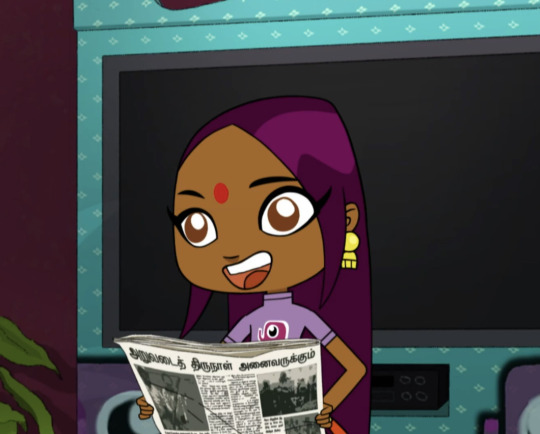
Ms. Apu and Sally’s family are Tamil confirmed?!!?? Or maybe she’s a Malayali who knows Tamil? 🤯
#youtube#sally bollywood#detective#sbi#doowee#doowee mcadam#rebecca#sally bollywood investigations#dravidian#malayali main character?#Tamil main character?
10 notes
·
View notes
Photo

#temple #southindia #chola #kumbakonam #architecture #cholaarchitecture #dravidian #culture #civilization #history #heritage #hinduism #hindu #ancient #trending #photoofday #wonder #figure #templechariot #colourful (at Kumbakonam) https://www.instagram.com/p/CkUU5FZyfc8/?igshid=NGJjMDIxMWI=
#temple#southindia#chola#kumbakonam#architecture#cholaarchitecture#dravidian#culture#civilization#history#heritage#hinduism#hindu#ancient#trending#photoofday#wonder#figure#templechariot#colourful
7 notes
·
View notes
Text

Rajarajesvaram, also known as the Brihadishvara Temple. Thanjavur, Tamil Nadu, India.
3 notes
·
View notes
Video
God’s confines by Shikher's Imagery
Via Flickr:
Being within the confines of God sets us free from the chained delusions of our minds.
#Airavatesvara Temple#Chola Dynasty#Dravidian#architecture#history#heritage#Tamil Nadu#Thanjavur#Kumbakonam#ShikhersImagery#flickr
2 notes
·
View notes
Text
MELUHHA. MELAKA. MELA. MEL. TA-MIL.
Meluhha/Melukhkha - This term appears in several ancient texts, including the Sumerian and Akkadian texts, and is thought to refer to the Indus Valley Civilization. Some scholars believe that the word has Dravidian origins.
Melaka - assemblage; “visionary encounters (with the Goddesses)”; the “union” (of Śiva and Śakti); Yoginīmelaka, “a meeting with Yoginīs”
Meru - This is a mountain that is considered sacred in Hindu, Buddhist, and Jain traditions. The word is believed to have Dravidian roots.
Mela - This is a Sanskrit word that means "gathering" or "assembly". It is commonly used to refer to large festivals and gatherings in India.
Melammu - This is a Sumerian word that means "divine radiance" or "divine glory". It is believed to have Dravidian roots.
Melakadambur - This is a village in Tamil Nadu, India, that is known for its ancient Hindu temple. The name of the village is believed to have originated from a combination of two words - "melai" (Tamil for high) and "kadambu" (Tamil for tree).
Melakarta - This is a system of organizing and classifying musical scales in Carnatic music, a classical music tradition from South India. The term "melakarta" literally means "primary scales" in Sanskrit, but its exact origins are unclear and it may have Dravidian roots.
Melaka - This is a city in Malaysia that was an important trading port in ancient times. The name is thought to have originated from a combination of two words - "mele" (Tamil for hill) and "ka" (Sanskrit for foot), referring to the city's location at the foot of a hill.
Melana - a form of dance in Odisha
Melap - a traditional musical instrument in Rajasthan
Melchham - a folk dance form in Himachal Pradesh
Mel - a festival celebrated in Assam
Melana - a religious festival celebrated by the Khasi tribe in Meghalaya
Mel - a community gathering in Punjab
Melo - a type of folk song in West Bengal
Melava - a gathering of people for a social or religious occasion in Maharashtra
Meluha - an ancient civilization in the Indus Valley
Mel - a gathering of people for social and cultural events in Kerala
Mela - a festival or fair held in various parts of India
Melat - a type of song in the Maldives
Melan - a traditional wrestling competition in Uttarakhand
Mela-kacheri - a type of music concert in Tamil Nadu
Melattur style - a style of Bharatanatyam dance in Tamil Nadu
Melodious - having a pleasant tune or melody in music
Melam - a type of percussion music in Kerala
Melapadam - a musical composition in the Indian classical tradition
Melakarta - a system of classification of ragas in Carnatic music
Melavu - a traditional folk dance in Andhra Pradesh
Melghat - a mountain range in Maharashtra
Melkote - a town in Karnataka known for its temples
Melnattu - a term used to describe the western region of Tamil Nadu
Melukote - a town in Karnataka known for its temples
Meliaputti - a town in Andhra Pradesh
Melavasal - a place in Tamil Nadu known for its silk production
Melachirappalli - a town in Tamil Nadu
Melur - a town in Tamil Nadu
Melathiruppanthuruthi - a village in Tamil Nadu
Melmaruvathur - a town in Tamil Nadu known for its temple
Melanam - a type of ceremonial procession in Kerala
Melapalayam - a town in Tamil Nadu
Melmuri - a village in Kerala
Melparamba - a village in Kerala
Melkam - a traditional dance in Assam
Melamchi - a river in Nepal
Melukavu - a village in Kerala
Melmadoor - a village in Telangana
Melukote Narasimha - a form of Lord Vishnu worshipped in Karnataka
Melkallur - a village in Tamil Nadu
Melasani - a village in Karnataka
Melkamane - a village in Karnataka
Melvettoor - a village in Kerala
Melthonnakkal - a village in Kerala
Melukote Vyasaraya - a prominent philosopher and saint in the Madhva tradition
Meloor - a village in Kerala
Melkavattur - a village in Tamil Nadu
Meladi - a village in Rajasthan.
SIDENOTE
"mel-" or "meldh-" which means "dark," "black," or "soil” is found in various Indo-European languages, such as the Latin word "melas," the Greek word "mélās," the Old English word "melan," and the Sanskrit word "mālā."
#meluhha#melaka#melakam#mela#meru#mel#tamil#dravidian#indus valley#history#south asia#india#ancient history#thamizh#malacca#malaysia#bharatanatyam#meladi#melakarta#melnattu#melat#melan#melo#melkam#mleccha#melechha#melana#melghat#melanam
7 notes
·
View notes
Photo
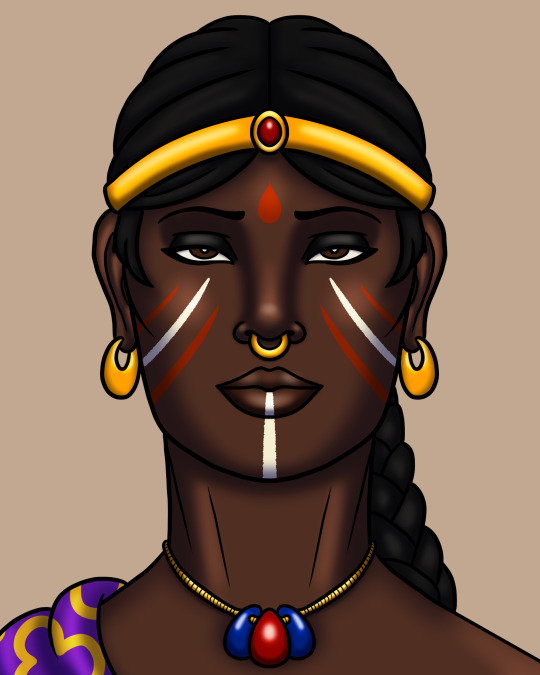
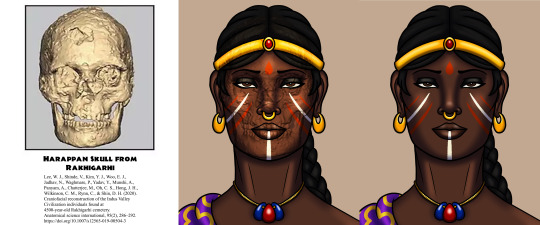
The subject of this reconstruction is a woman from the Harappan civilization who lived between 2,200 and 2,600 years ago. Developing along the Indus River in what are now Pakistan and northern India, the Harappans represent the oldest known urban civilization in the South Asian region.
Source of skull image:
Lee, W. J., Shinde, V., Kim, Y. J., Woo, E. J., Jadhav, N., Waghmare, P., Yadav, Y., Munshi, A., Panyam, A., Chatterjee, M., Oh, C. S., Hong, J. H., Wilkinson, C. M., Rynn, C., & Shin, D. H. (2020). Craniofacial reconstruction of the Indus Valley Civilization individuals found at 4500-year-old Rakhigarhi cemetery. Anatomical science international, 95(2), 286–292.
#harappan#Indus Valley Civilization#indian#south asian#dravidian#dark skin#woman of color#woc#portrait#reconstruction#anthropology#digital art#art
13 notes
·
View notes
Text
Dravidian peoples
Brahui people: People belonging to the north-Dravidian subgroup, mostly found in the Balochistan province of Pakistan. They now culturally and ethnically largely resemble the Balochi people around them, with whom they have mixed with substantially.
Kurukh: People belonging to the north-Dravidian subgroup. Found in India and Bangladesh, the only Dravidian language indigenous in Bangladesh.
Khonds: Tribal people who speak the Dravidian Kui language. Mostly found in the eastern Indian states of Orissa and Andhra Pradesh.
Gond people: A prominent group of Dravidian-speaking tribal people inhabiting the central region of India.
Kannadiga: People belonging to the south-Dravidian subgroup. Mostly found in Karnataka and parts of northern Kerala.
Kodava: People belonging to the south-Dravidian subgroup. Mostly found in the Kodagu (Coorg) region of Karnataka.
Malayali: People belonging to the south-Dravidian subgroup found primarily in Kerala.
Tamil: These people belong to south-Dravidian linguistic subgroup. Mostly found in Tamil Nadu, parts of Kerala, parts of Sri Lanka, South Africa, Singapore and Malaysia.
Telugu: These people belong to south-Dravidian subgroup (formerly classified with the Central Dravidian but now more specifically in the South Dravidian II or South Central Dravidian inner branch of the South Dravidian.[4] Mostly found in Andhra Pradesh also in Orissa and Tamil Nadu.
Tuluva: People belonging to the south Dravidian subgroup, found in southern Karnataka and northern Kerala, alternatively named Tulu Nadu.
https://www.newworldencyclopedia.org/entry/dravidian_peoples
6 notes
·
View notes
Photo

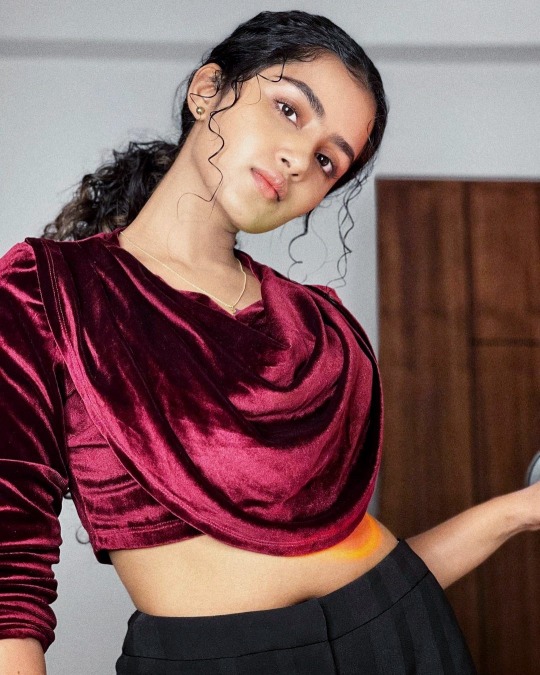

3 notes
·
View notes